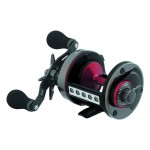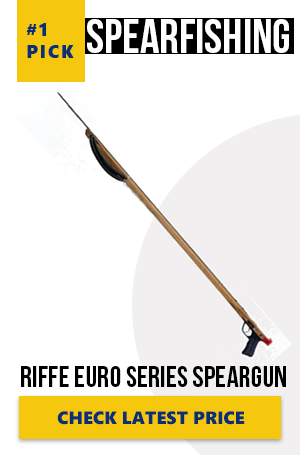What Is A Carp And 10 Facts You Should Know
As a carp expert, I am often asked the question, ‘What is a carp?’
Carp are freshwater fish that have been around for thousands of years and are known for their large size and distinctive scales. They can be found in rivers, lakes, and ponds all over the world and have become popular among anglers as a challenging catch.
But there’s much more to know about these fascinating fish than just their appearance. In this article, we’ll delve deeper into what makes a carp unique and share 10 facts you should know if you’re interested in learning more about this species.
From their feeding habits to their role in history and culture, we’ll explore everything you need to know about carps. So let’s dive in!
What Are Carps And Where Are They Found?
Carp is a freshwater fish that belongs to the family Cyprinidae. They are one of the most widely distributed species in the world, found in Asia, Europe, and North America. Carp can live up to 25 years and grow up to four feet long.
Carp breeding has been practiced for thousands of years. In ancient Rome, they were bred for food, while in China, they were kept as ornamental fish in ponds.
Today, carp farming techniques have improved significantly with advances in technology and research. Fish farmers use different methods like pond culture or tank systems to raise carps commercially.
Physical Characteristics Of Carps
As you gaze upon a carp, you may notice the elegant curves of their body and the shimmering scales that adorn them. The physical characteristics of carps are truly fascinating, especially when considering how they play a role in carp breeding and survival.
Let’s dive into some key aspects of carp anatomy:
- They have long, cylindrical bodies with slightly flattened sides.
- Their dorsal fin has a serrated edge.
- Carps possess barbels (whisker-like organs) around their mouths which help them locate food.
- These fish also have specialized pharyngeal teeth located at the back of their throats for grinding up food before swallowing.
When it comes to breeding, male carps develop small white bumps called tubercles on their heads during spawning season. Females will lay hundreds of thousands of eggs at once, which can be fertilized by multiple males.
Understanding these unique physical features is crucial to successful carp farming and conservation efforts. So next time you see a carp swimming gracefully through the water, take a moment to appreciate all the intricate details that contribute to its beauty and resilience.
Feeding Habits And Diet Of Carps
When it comes to fish feeding, carps are not picky eaters. They have a versatile diet that includes plants, insects, crustaceans, and even small fish. Carps use their sense of smell and taste to locate food in the water column. Unlike some other species, they do not rely on sight for finding prey.
Aquatic nutrition is essential for maintaining healthy carps. In the wild, they feed on various types of algae and aquatic plant life. However, when kept in captivity or ponds, special attention must be given to provide them with proper nutrition.
Commercial carp feeds contain ingredients such as soybean meal, wheat bran, cornmeal, and fishmeal to meet their dietary requirements. It’s also important to monitor the amount of food provided to prevent overfeeding and subsequent health problems.
Understanding the feeding habits and nutritional needs of carps is key to ensuring their overall well-being in any environment.
Life Cycle Of Carps
You may be wondering why you should care about the life cycle of a carp. After all, isn’t it just another fish in the sea? Well, let me tell you that carps have a significant impact on our environment and economy. Understanding their breeding habits and life cycle can help us better manage their populations and minimize their environmental impact.
So what exactly is the life cycle of a carp? It starts with spawning, which usually occurs in early spring when water temperatures reach around 18 degrees Celsius. Females release thousands of eggs into shallow waters while males fertilize them with sperm. The fertilized eggs then hatch within two to eight days depending on water temperature. Once hatched, the young carps feed on plankton until they are large enough to eat insects and small crustaceans.
Here are four key things to know about carp breeding:
- Carp are prolific breeders – one female can lay up to one million eggs!
- They prefer calm, slow-moving waters for spawning.
- Male carps will often chase females during spawning season.
- Carp can reproduce multiple times per year if conditions are right.
Understanding how carps breed and develop is crucial for managing their populations sustainably. Overpopulation of these fish can lead to negative impacts such as competition with native species for food and habitat, degradation of water quality due to increased nutrient levels from carp excrement, and damage to infrastructure like dams or irrigation systems by burrowing behaviors.
By monitoring their numbers and controlling reproduction rates through methods like selective harvesting or chemical treatments, we can minimize these risks and preserve our aquatic environments for generations to come without sacrificing economic opportunities related to fishing and aquaculture industries.
Importance Of Carps In History And Culture
As we have learned in the previous section, carps undergo a complex life cycle that involves spawning and hatching. However, their significance goes beyond just being an aquatic creature. Carps hold great cultural and historical importance.
In many cultures around the world, carps are considered to be symbols of good luck or prosperity. For example, in Japan, koi fish (a type of carp) are highly revered and kept as pets for their beauty and symbolic value. Additionally, during Chinese New Year celebrations, it is customary to serve a whole steamed carp as a symbol of abundance and good fortune. In Europe, carps were historically bred as food sources by monks in monasteries during Lent when meat consumption was prohibited.
The historical importance of carps extends even further back in time. Evidence suggests that they were first domesticated over 2,500 years ago in China for food purposes. They quickly spread across Asia and eventually made their way to Europe through trade routes established by the Roman Empire.
Today, carps continue to play an important role in fisheries worldwide due to their hardiness and adaptability to different environments.
Cultural significance and historical importance make carps more than just another species swimming in our waters. Their symbolism offers insight into human beliefs and values throughout history while also showcasing how this resilient creature has thrived despite environmental changes brought on by human interventions.
Different Species Of Carps
The carp is a fascinating fish species that comes in various breeds. Each breed has its unique features and characteristics, which makes them stand out from one another. As a carp expert, I have studied different common carp breeds and their breeding techniques to understand their behavior better.
When it comes to common carp breeds, there are several popular ones that you should know. First on the list is the Mirror Carp, known for its large scales and lack of barbels around the mouth area.
Another famous breed is the Leather Carp, characterized by its smooth skin with no scales at all.
Lastly, we have the Ghost Carp, which has transparent or semi-transparent scales that make it look ghostly underwater. Understanding these differences can help you identify what type of carp you’re dealing with when fishing or raising them.
If you want to start breeding carps, then you need to be familiar with some essential techniques. One technique is called hand-stripping method wherein eggs are collected manually from female carps through gentle stroking motions.
Another approach is using pituitary gland extract (PGE) injection on females to induce spawning artificially.
The third most widely used technique is crossbreeding two different types of carps to produce hybrid offspring with desirable traits such as faster growth rate or higher resistance against diseases.
Overall, the diversity among common carp breeds and breeding techniques offers endless possibilities for innovation within the field of aquaculture. By understanding these nuances and continually improving our methods, we can unlock new ways to sustainably farm this valuable food source while preserving natural ecosystems.
Carp Fishing Techniques
As we’ve discussed in the previous section, there are many different species of carps. But knowing their names is not enough if you want to catch them. You need to understand their behavior and habitat as well as use appropriate techniques for each one.
In this section, we will focus on two popular carp fishing techniques: fly fishing and bait fishing.
Fly fishing is a method that requires skill and patience but can be extremely rewarding. This technique involves using an artificial fly that imitates natural food sources such as insects or small fish. It’s important to carefully choose the right type of fly depending on the weather conditions, time of day, and location where you’re fishing.
Fly fishermen usually perform a series of casts with delicate movements to attract the carp. Once they bite, it’s crucial to handle them gently so as not to damage their mouth or scales before releasing them back into the water.
On the other hand, bait fishing is a more traditional approach that consists of using natural baits such as worms, corn kernels, boilies, or pellets. The goal is to create a scent trail that attracts the fish towards your hook.
To increase your chances of success, you should consider chumming – throwing some extra bait around your target area – which can stimulate feeding frenzies among groups of carps. However, keep in mind that too much bait can also scare away timid individuals who prefer solitary feeding patterns.
As with any type of fishing technique, it takes practice and experimentation to find what works best for you and your specific situation. Happy angling!
Tips For Caring For Your Carp Fish Tank.
Taking care of your carp fish tank can be a rewarding experience, but it takes dedication and effort to maintain a healthy environment for your fish.
One important aspect of caring for your carp is keeping their tank clean. A regular cleaning schedule will prevent the buildup of harmful bacteria and keep the water clear.
In addition to cleanliness, decorating your carp’s tank can provide stimulation and entertainment for them. Some ideas include adding plants or rocks for hiding spots, driftwood for perching or even creating a themed landscape such as an underwater castle or shipwreck. However, it’s important to make sure any decorations are safe for your carp and won’t harm them.
Overall, taking care of your carp requires attention to detail and creativity in providing an enriching habitat for them to thrive in.
- Regularly test water quality using a kit designed specifically for aquariums.
- Use gravel vacuum during weekly 25% water changes.
- Check filters regularly and replace cartridges every month or two depending on usage.
- Avoid overfeeding by only offering small amounts at one time.
- Keep an eye out for signs of illness including discoloration, lethargy, or abnormal swimming behavior.
Remember that maintaining a healthy environment for your carp not only benefits them but also enhances the enjoyment you get from watching these fascinating creatures swim around their home. With proper care and attention, you’ll have happy and healthy carp living in a beautiful tank that reflects their natural habitat.
Conclusion
So there you have it, folks! Carps are fascinating creatures with a rich history and cultural significance.
From their physical characteristics to their feeding habits and life cycle, we’ve covered 10 essential facts about these fish.
As a carp expert myself, I must say that caring for carps is both rewarding and challenging.
Whether you’re fishing for them or keeping them in your own tank, it’s important to understand their unique needs and behaviors. Remember, just like any other living creature, they require proper care and attention.
In conclusion, carps may not be the most glamorous of fish species but they certainly deserve our respect and admiration.
As one wise person once said, ‘a carp is not just a fish – it’s a way of life.’
So go out there and explore the wonderful world of carps!





























